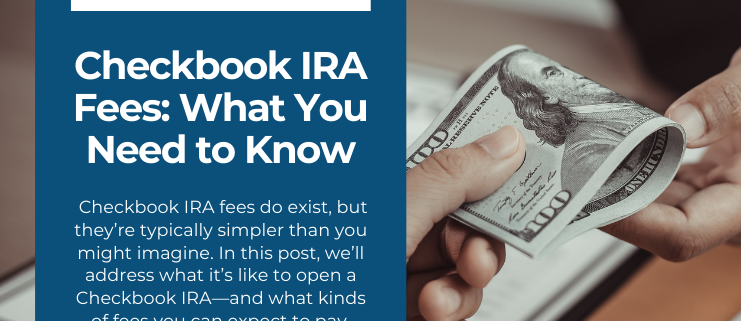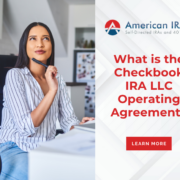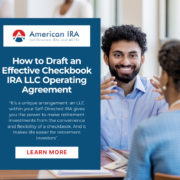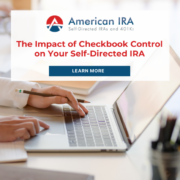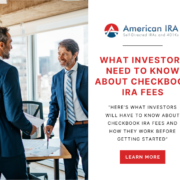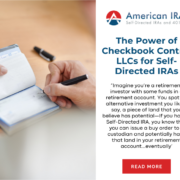Checkbook IRA Fees: What You Need to Know
A Checkbook IRA can be one of the most liberating ways to invest. But does that freedom come at a price? You might be surprised. Checkbook IRA fees do exist, but they’re typically simpler than you might imagine. In this post, we’ll address what it’s like to open a Checkbook IRA—and what kinds of fees you can expect to pay.
What is a Checkbook IRA?
A Checkbook IRA is a Self-Directed IRA with checkbook control. This typically means the Self-Directed IRA holds a Single Member LLC, which is the actual entity holding the bank account. And since your IRA owns the LLC, it means you—the IRA owner—ultimately hold the power of the checkbook. You can imagine what this might do for your ability to make investments within a retirement account. More freedom, more flexibility, more possibilities for diversifying your portfolio with ease.
What Kinds of Fees Are Involved in a Checkbook IRA?
There’s some good news here if you’re playing the long game. If you own a Checkbook IRA, the maintenance fees on the account are actually quite minimal. Since you’re the one handling the checkbook, for example, there isn’t any additional input required from your Self-Directed IRA administration firm to carry out the buy and sell orders.
But there are initial setup fees. For example, if you set up a Self-Directed IRA and create a Single Member LLC, those carry some costs. The tradeoff here is that the upfront investment and paperwork will give you some initial fees while reducing the overall fees you pay down the line. If you were to use a Self-Directed IRA alone, you’d continue to issue buy and sell orders to a custodian, which would require paying ongoing fees to that custodian for this administrative work.
What Kinds of Fees Should You Expect?
The first cost you’ll encounter with a Checkbook IRA? The initial setup fee. You’re going to have to establish two entities here:
- The Self-Directed IRA. This means filling out paperwork with a Self-Directed IRA administration firm, for example. You might choose a Roth IRA, a Traditional IRA, or even other potential avenues like Solo 401(k) plans.
- The Single Member LLC. The LLC is what will hold the checkbook most directly. It will have to be a Single Member LLC so your IRA can be the sole owner, which gives you the ultimate control over what happens to the funds within this account.
Once you have your Single Member LLC, you’ll be able to open the checkbook for this account. The IRA technically owns the LLC which owns the bank account. If it sounds complicated, remember that this is all a legal and powerful way to set up yourself for easy retirement investing down the line.
You may have to pay some filing fees and setup fees associated with getting this paperwork squared away. Reach out to a Self-Directed IRA administration firm like American IRA and we’ll steer you through the process.
What Kinds of Maintenance Fees to Expect
Are there long-term maintenance fees? Some people have the mistaken idea that there are no maintenance fees on this structure. But depending on the state you’re in, you will have to pay state filing fees to keep the LLC active. And you will likely have the upfront fees associated with setting up that LLC—creating the operating agreement and filing the paperwork with your state, for example.
But in the end, it’s much easier than you think. And the result is an arrangement that lets you invest more on your terms. Interested in learning more about Self-Directed IRAs? Contact American IRA, LLC at 866-7500-IRA (472) for a free consultation. Download our free guides or visit us online at www.AmericanIRA.com.

